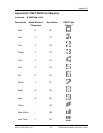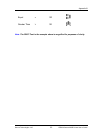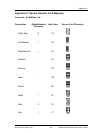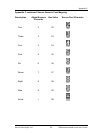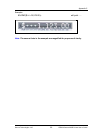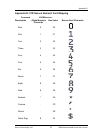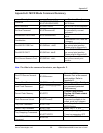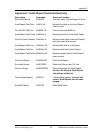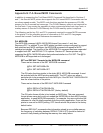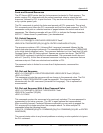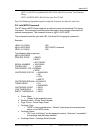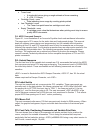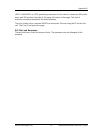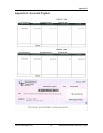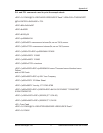
Source Technologies, LLC ST9630 Secure MICR Printer User’s Guide
70
Appendix G: PJL Based MICR Commands
In addition to supporting the Text Based MICR Command Set described in Sections 6
and 7, this Secure MICR printer also supports the PJL based MICR Commands used on
our slower speed models. The MICR code functions emulate the presence of FLASH
memory for the 5 secured font resources. The FLASH Memory option is not required for
the five fonts. If you require the capability to store custom signature fonts, logo fonts, or
overlay macros in Secure FLASH Memory the FLASH memory option is required.
The following are the key PJL and PCL commands required to access MICR resources
in the printer. For the complete source of information on PJL and PCL languages,
consult the Lexmark Technical Reference documentation.
PJL MICRJOB
The MICRJOB command (@PJL MICRJOB) forces Copy count=1, and Jam
Recovery=OFF. In addition, if your MICR printer has been custom configured to support
both standard and MICR cartridges, the MICRJOB command will request a MICR
cartridge be installed. The function of the MICRJOB PJL command has been expanded
to support both SET and DEFAULT PJL options. Previous ST Secure printers only
supported the @PJL MICRJOB option that performed similar to a PJL SET. The @PJL
MICRJOB is still supported and unchanged.
SET and DEFAULT formats for the MICRJOB command
There are two formats of the SET MICRJOB command
@PJL SET MICRJOB=ON
@PJL SET MICRJOB=OFF
The ON value functions similar to the older @PJL MICRJOB command. It must
be included with the MICR printing application. The OFF value can allow a
particular job to be processed as a non-MCR job, if the DEFAULT MICRJOB=ON
was the current status of the printer.
There are two formats of the DEFAULT MICRJOB Command
@PJL DEFAULT MICRJOB=ON
@PJL DEFAULT MICRJOB=OFF (factory default)
The ON value forces all jobs to be treated as MICR jobs. This new command
format allows users who could not embed the MICRJOB into their MICR printing
application, to send MICRJOB separately. For example, the user could send the
command in a flat file totally separate from the printing application. Once set the
printer is now set for MICR printing. OFF format returns the printer to the factory
default value.
Because DEFAULT commands alter information stored in non-volatile memory,
the frequency of switching between DEFAULT ON & OFF should be limited to
around 5 daily thereby protecting the memory from early failure.
Appendix G



